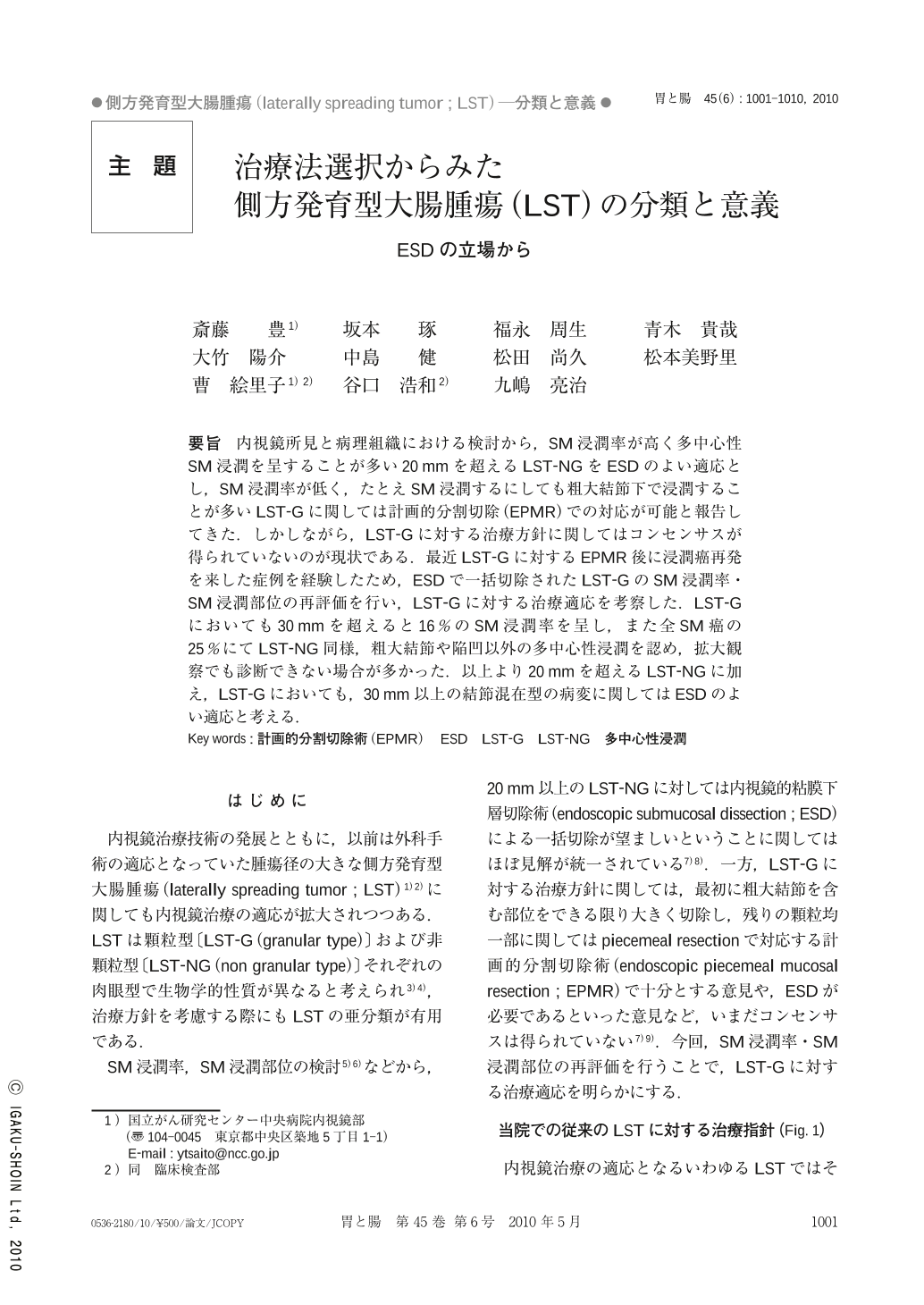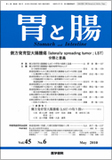Japanese
English
- 有料閲覧
- Abstract 文献概要
- 1ページ目 Look Inside
- 参考文献 Reference
- サイト内被引用 Cited by
要旨 内視鏡所見と病理組織における検討から,SM浸潤率が高く多中心性SM浸潤を呈することが多い20mmを超えるLST-NGをESDのよい適応とし,SM浸潤率が低く,たとえSM浸潤するにしても粗大結節下で浸潤することが多いLST-Gに関しては計画的分割切除(EPMR)での対応が可能と報告してきた.しかしながら,LST-Gに対する治療方針に関してはコンセンサスが得られていないのが現状である.最近LST-Gに対するEPMR後に浸潤癌再発を来した症例を経験したため,ESDで一括切除されたLST-GのSM浸潤率・SM浸潤部位の再評価を行い,LST-Gに対する治療適応を考察した.LST-Gにおいても30mmを超えると16%のSM浸潤率を呈し,また全SM癌の25%にてLST-NG同様,粗大結節や陥凹以外の多中心性浸潤を認め,拡大観察でも診断できない場合が多かった.以上より20mmを超えるLST-NGに加え,LST-Gにおいても,30mm以上の結節混在型の病変に関してはESDのよい適応と考える.
We previously reported that granular type laterally spreading tumors(LST-Gs)can be treated by EPMR(endoscopic piecemeal mucosal resection)because of a lower submucosal(sm)invasion rate with most SM invasions that do occur found under a large nodule.
In contrast, non-granular type laterally spreading tumors(LST-NGs)>20mm should be resected en bloc using ESD(endoscopic submucosal dissection)because of a higher sm invasion rate and difficulty in predicting the area of sm invasion. There is no consensus, however, on the appropriate treatment strategy for LST-Gs at the present time.
We recently encountered two cases of invasive recurrence after EPMR of LST-Gs histologically determined to be intramucosal cancers. As a result, we have reevaluated the sm invasion rate and sm invasion area using en-bloc LST-G specimens and reconsidered our previous treatment strategy for LST-Gs.
The sm invasion rate for LST-Gs>30mm was 16% with 25% for multifocal invasion outside of a large nodule or depression which was difficult to diagnose even using magnification colonoscopy. Based on these latest findings, LST-Gs with a large nodule>30mm are also good candidates for ESD.

Copyright © 2010, Igaku-Shoin Ltd. All rights reserved.


